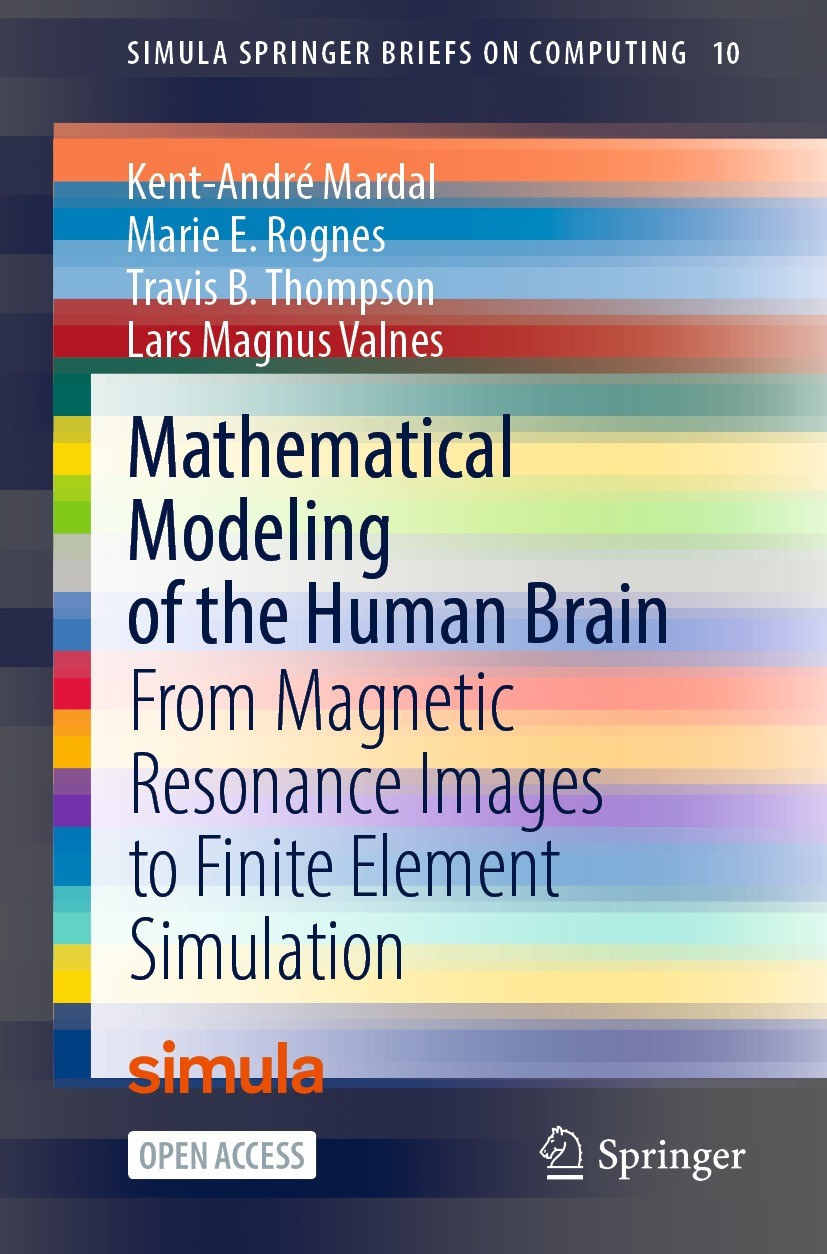| 书目名称 | Mathematical Modeling of the Human Brain |
| 副标题 | From Magnetic Resona |
| 编辑 | Kent-André Mardal,Marie E. Rognes,Lars Magnus Valn |
| 视频video | http://file.papertrans.cn/627/626360/626360.mp4 |
| 概述 | This book is open access, which means that you have free and unlimited access.Includes a step-by-step guide to constructing anatomical finite element brain meshes |
| 丛书名称 | Simula SpringerBriefs on Computing |
| 图书封面 |  |
| 描述 | .This open access book bridges common tools in medical imaging and neuroscience with the numerical solution of brain modelling PDEs. The connection between these areas is established through the use of two existing tools, FreeSurfer and FEniCS, and one novel tool, the SVM-Tk, developed for this book. The reader will learn the basics of magnetic resonance imaging and quickly proceed to generating their first FEniCS brain meshes from T1-weighted images. The book‘s presentation concludes with the reader solving a simplified PDE model of gadobutrol diffusion in the brain that incorporates diffusion tensor images, of various resolution, and complex, multi-domain, variable-resolution FEniCS meshes with detailed markings of anatomical brain regions. After completing this book, the reader will have a solid foundation for performing patient-specific finite element simulations of biomechanical models of the human brain.. |
| 出版日期 | Book‘‘‘‘‘‘‘‘ 2022 |
| 关键词 | Open Access; magnetic resonance imaging; Mesh generation; mathematical modeling; finite element methods; |
| 版次 | 1 |
| doi | https://doi.org/10.1007/978-3-030-95136-8 |
| isbn_softcover | 978-3-030-95135-1 |
| isbn_ebook | 978-3-030-95136-8Series ISSN 2512-1677 Series E-ISSN 2512-1685 |
| issn_series | 2512-1677 |
| copyright | The Author(s) 2022 |
 |Archiver|手机版|小黑屋|
派博传思国际
( 京公网安备110108008328)
GMT+8, 2025-11-13 16:24
|Archiver|手机版|小黑屋|
派博传思国际
( 京公网安备110108008328)
GMT+8, 2025-11-13 16:24


